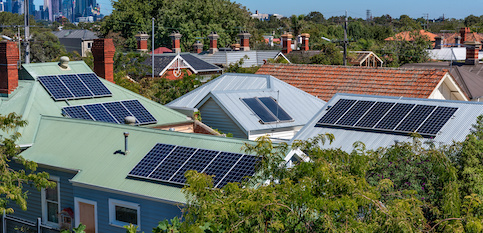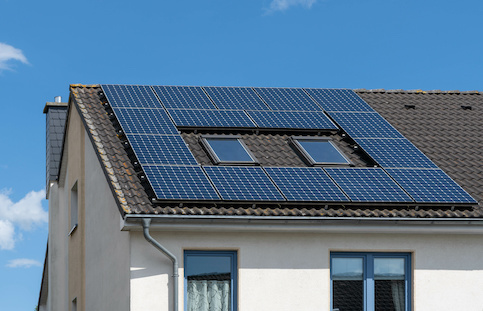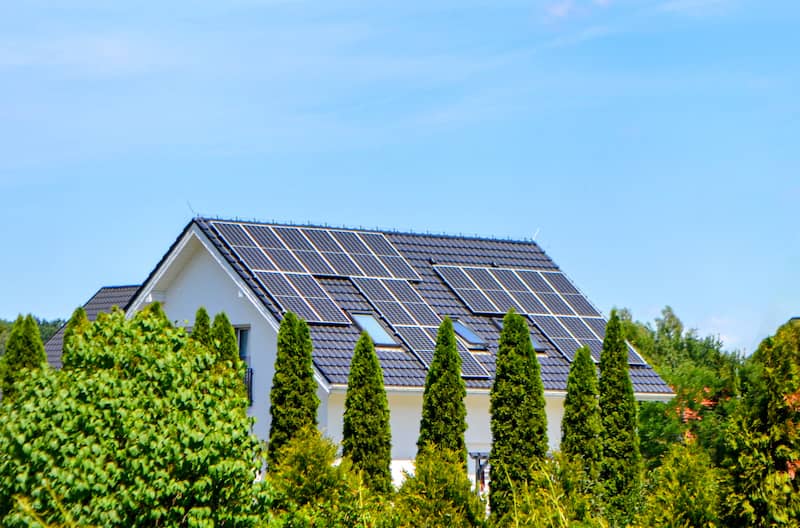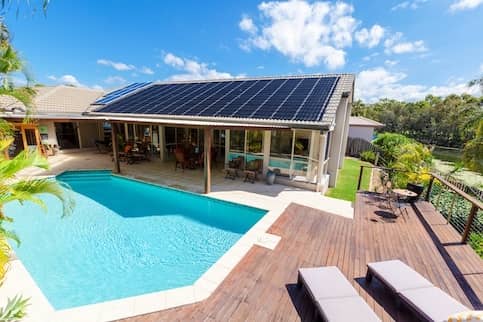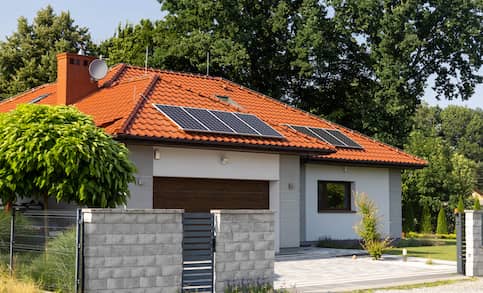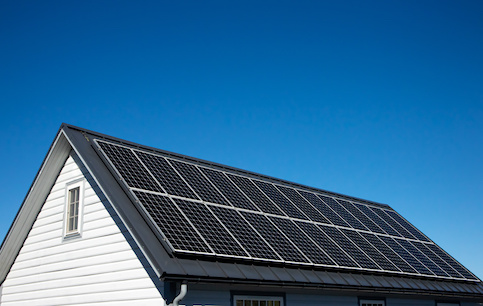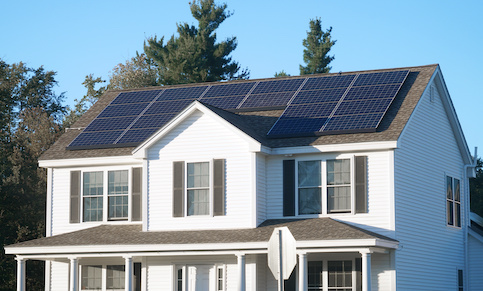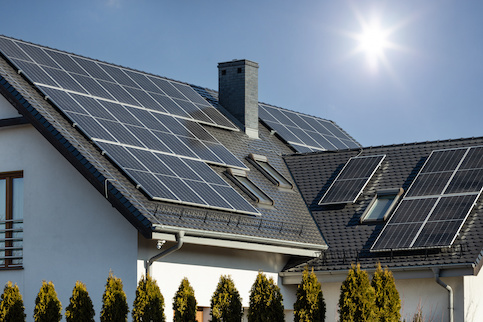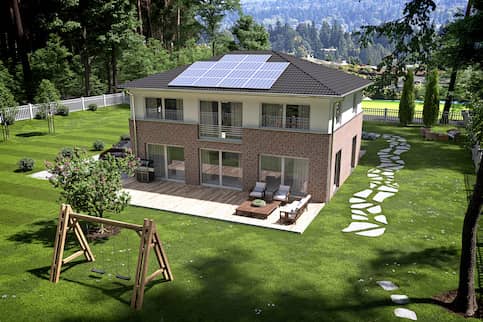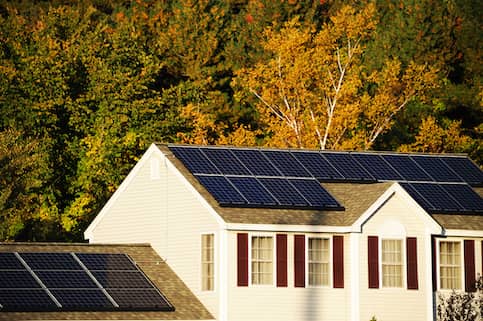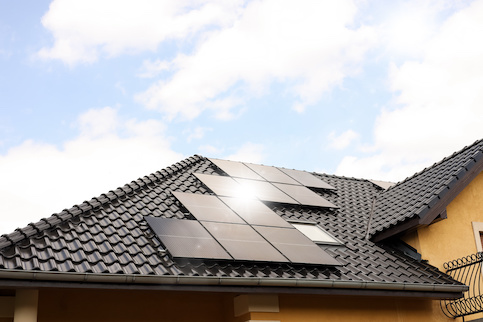With rising energy costs, you might be wondering how you can harness solar energy for your home. Coupled with growing concern for the environment, solar energy is an increasingly popular energy option for many homeowners.
Before you embark on this investment, you may be asking, what exactly is solar energy and how does it really work? In this article, we’ll walk you through everything you need to know about this renewable energy source.
Solar Energy, Defined
Solar energy is produced from the sun and the sun’s radiation is harnessed into power through advanced technology like solar panels to be converted into useful heat and electricity.
The origin of solar energy is heavily debated, as humankind has relied upon the sun since as early as the 7th century B.C., when glass was used to magnify sunlight and start fires.
But solar energy as we know it today can be traced back at least as far as the 1830s, when a French physicist named Edmond Becquerel discovered that cells could produce more power when exposed to light. This first photovoltaic cell laid the groundwork for future renewable energy efforts, with Bell Labs in Murray Hill, New Jersey, creating the first silicon solar panel in 1954.
See What You Qualify For
Buy A Home
Discover mortgage options that fit your unique financial needs.

Refinance
Refinance your mortgage to have more money for what matters.
Tap Into Equity
Use your home’s equity and unlock cash to achieve your goals.
How Does Solar Energy Work?
Most of us understand that solar cells capture sunlight and turn it into renewable energy, but how does this advanced technology really work?
Simply put, when solar radiation comes in contact with the semiconductor materials found in solar panels, electrons are loosened from their atoms and flow through the cell, generating electricity. This is a more affordable, eco-friendly form of electricity generation than coal and natural gas, and therefore the demand for solar energy has increased rapidly in recent years due to growing concern about climate change and electricity costs.
But what happens with solar energy once it has been collected? After converting the generated electricity from direct current (DC) electricity to alternating current (AC) electricity – which powers most homes and businesses – a net meter measures solar energy production and usage.
In the event that you’re producing more energy than you’re using, you’ll have the option of storing the excess energy or sending it to the grid, which typically results in credits from your utility company.
How Is Solar Energy Harnessed?
There are several methods and technologies used to harness solar power: photovoltaics, concentrating solar power (CSP) and solar heating and cooling. Let’s take a brief look at each.
Photovoltaics
Photovoltaic (PV) solar panels are the most popular solar technology and therefore what we’ve discussed thus far in this article. PV solar panels feature a matrix of photovoltaic cells. Each cell contains two semiconductor wafers, which create a depletion zone.
When light photons come in contact with these semiconductors, the interaction between the two disrupts the depletion zone and prompts outer electrons to separate from their atomic bonds, creating a flow of electricity that can then be converted to AC power with an inverter.
Concentrating Solar Power
CSP plants use mirrors to concentrate the sun’s energy, which is then converted into thermal energy and pushed through a heat exchanger to produce steam. That steam powers conventional steam turbine systems to generate electricity.
These power plants are primarily located in California, Florida, Arizona and Nevada – where limited cloud cover means frequent sun exposure.
Solar Heating And Cooling
Solar heating and cooling (SHC) technologies present the opportunity to utilize solar energy in place of fossil fuels like natural gas. These technologies collect thermal energy from solar rays and use it for things like creating hot water, heating pools, and heating and cooling spaces.
Solar water heating systems can be installed on their own or combined with PV modules.
How Solar Energy Is Used
Depending on the user’s needs, solar energy can be utilized in several ways, including:
- Solar electricity: Solar radiation can be converted directly into electricity through solar panels. Once harnessed, this solar electricity is used like traditional electricity.
- Solar water heating: Solar water heating systems collect the sun’s thermal energy and use it to heat the water tank.
- Solar ventilation: These ventilation solutions, such as solar attic fans, are powered by solar energy and can help cool your home in the hotter months.
- Solar lighting: Looking to incorporate solar but not ready to embrace solar electricity on a broad scale? Consider solar lights, a relatively affordable lighting option available in a variety of styles.
- Portable solar: Portable solar PV chargers allow phones, tablets and other connected devices to charge on the go.
In recent years, solar energy has also become increasingly popular in energy-efficient homes. And solar transportation is another growing technology, allowing cars, buses, yachts and more to run on renewable energy at least part of the time.
Solar Energy FAQs
How is solar energy produced?
Solar energy is produced by the sun and harvested through solar technologies like solar panels.
Solar panels absorb solar radiation, prompting electrons to separate from their atoms, leading to a burst of electricity.
What is solar energy used for?
Solar energy can be used for electricity, heating and cooling, lighting, ventilation and more. It is most commonly used for powering homes, businesses and other buildings.
Is solar power a clean energy source?
Unlike fossil fuels, solar power leaves minimal carbon footprint, making it widely considered the cleanest energy source.
But though solar power itself is a clean energy alternative, it’s important to note that the process of constructing solar panels emits greenhouse gases. Still, the long-term impact of solar panels is positive for the environment when compared with traditional forms of energy.
What are the benefits of solar energy?
Solar energy has the potential to lower your electric bills and protect the environment at the same time. It’s sustainable, renewable and relatively low maintenance.
And though the initial cost of installing solar panels isn’t insignificant, there are financing options available to help lighten the load and the energy savings will repay the upfront costs in as little as 7 – 10 years, making it a good long-term investment.
To determine if solar energy is right for you, consider how much sunlight your home receives. The more sunlight an area receives, the better candidate it is for solar energy. If you get a fair bit of sun, adding solar panels to your home can increase its value. If you don’t, you can consider buying a house with solar panels instead.
The Bottom Line On Solar Energy
Although it was once considered a distant dream, solar energy has become a more attainable, popular energy option in recent years. And for good reason: solar power is a clean, renewable alternative to traditional energy sources – meaning it’s better for the earth – and it has the potential to lower your energy bills – meaning it’s better for your wallet.
Looking to embrace solar technology? From portable solar chargers to solar lighting, there are several options to dip your toe into the water. But to go a step further, learn more about the return on investment of solar panels for your home.

Katie Ziraldo
Katie Ziraldo is a financial writer and data journalist focused on creating accurate, accessible and educational content for future generations of home buyers. Her portfolio of work includes The Detroit Free Press and The Huffington Post.
